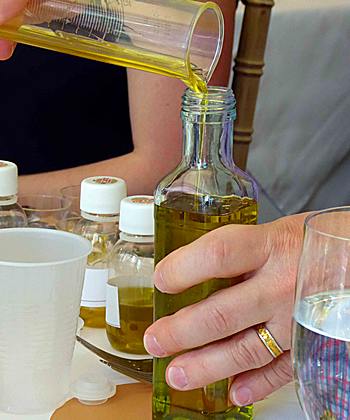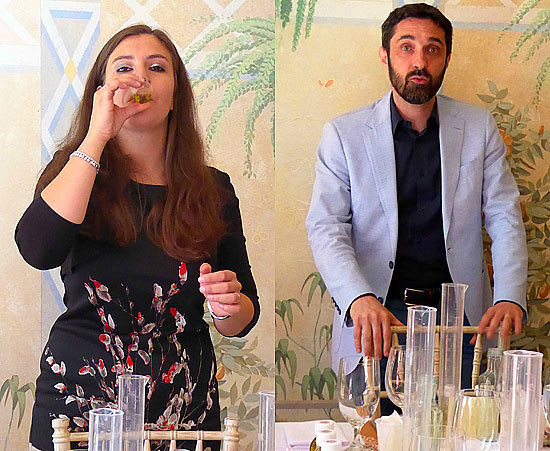To blend or not to blend? We’d like to believe that the world’s best olive oil is pressed in Jaén province in Spain from Picual olives. That’s the oil we like on a Caprese salad made with fresh mozzarella and garden tomatoes. But more than a thousand cultivars of Olea europaea trees grow around the Mediterranean basin, and most are used for making oil as well as for cured and brined olives. Which really are best?
Every Spaniard, Italian, Greek, or French person believes that the best oil comes from the family olive grove. They are right because it’s a matter of taste. Surprisingly, most olive oils are blends. They might be blended at harvest from groves with many cultivars. They might be blended after pressing. They might be blended from pressings of green and ripe olives picked from the same trees at different times. Or they might be blended from oils made in many different countries.
Learning to blend
Historically, the master olive oil blenders have been Italian. One of those great companies, Oleificio Zucchi (zucchi.us), launched in 1810. Finally bringing its line of extra virgin olive oils to the U.S., the company is holding blending workshops to demonstrate its approach. We joined one last week at Mamma Maria restaurant (mammamaria.com) in Boston’s North End. Francesca Tiberto (top left), Zucchi’s taster and blend master, led the session. Giovanni Zucchi (top right), managing director and author of Olive Oil Doesn’t Grow on Trees, provided technical details.
The point of blending is to produce a consistent product with the same flavor profile year after year. To get a feel for the artistry involved, we tasted four samples of extra virgin olive oil from four different cultivars and three different countries. With Tiberto’s guidance, we scored each sample on its intensity of fruitiness, bitterness, and spiciness. We also ascribed other taste overtones—flowers, artichoke, green grass, apple, ripe fruits, sweet and bitter almond, and so on.
Al proprio gusto
 In a more challenging test, we then used a graduated column to make individual blends of the samples. By blending small batches to start, we could experiment until we found a blend that suited us. Our final 250ml bottle contained 50 percent Cerasuola oil from Sicily, 20 percent light Koroneiki oil from Crete, 20 percent soft Arbequina oil from Cordoba province in Spain, and 10 percent sharp Hojiblanca oil from Estepa in Spain’s Sevilla province.
In a more challenging test, we then used a graduated column to make individual blends of the samples. By blending small batches to start, we could experiment until we found a blend that suited us. Our final 250ml bottle contained 50 percent Cerasuola oil from Sicily, 20 percent light Koroneiki oil from Crete, 20 percent soft Arbequina oil from Cordoba province in Spain, and 10 percent sharp Hojiblanca oil from Estepa in Spain’s Sevilla province.
We like the blend just fine, but we tasted Zucchi’s line of oils with Mamma Maria dishes, and all four (Sinfonia, 100% Italian, Sweet and Fruity, and Organic) were more nuanced than our product. The lesson here is that it takes a master blender to make a master blend. At this point, Zucchi oils are available at Big Y supermarkets (bigy.com) in the Massachusetts and Connecticut, King Kullen markets (kingkullen.com) in New York, and Dave’s Fresh Pasta (dfp.website) in Davis Square in Somerville, Mass. Retail is $11-$12 per 500ml bottle. When our garden tomatoes arrive, we plan to try the Organic Extra Virgin on a Caprese salad—the ultimate test.



